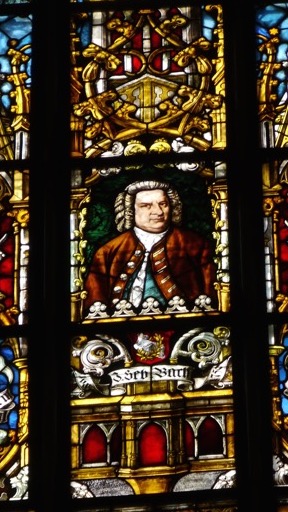Bach, Jesu Meine Freude, BWV 277

“Motet” often means a sacred polyphonic work with a Latin text. But motets took different forms over a long history from the 13th to the 18th century, varying from place to place and era to era. Secular motets dominated the late medieval period. Latin and French words were combined. You can still find motets composed in later periods, from Mozart to Messiaen.
The six motets of J.S. Bach (with texts in German) date from his early years in Leipzig (1723-1731), and they make up a very small part of his choral compositions.
Bach’s works almost always present the listener with a wondrous complexity that may seem daunting at first. But the broad outlines of his complex structures are reasonably easy to grasp, while the depth and detail can keep music theorists constantly occupied. Looking at Jesu meine Freude (Jesus, my joy), I’m sure I could fill a semester-long seminar analyzing it. Now there’s a good use of our time during this lockdown!
Let me offer just a couple of suggestions for your listening. First, you may already know the chorale tune since it appears in the hymnals of many denominations as “Jesus, Priceless Treasure” or “Jesus, All My Gladness.” Familiarize yourself with the chorale tune (the motet begins with the first verse of the chorale) because it will keep coming back throughout the motet. Listen for the descending melody of the first phrase and the ascending figure that follows. In particular, listen for the chorale melody as each phrase comes in periodically, complete and unchanged, in the alto part of movement 9.
Second, read the text as you listen. The full text with English translation can be found here, and you can find the full score in German or English at IMSLP. The eleven movements alternate between verses of the chorale and choral settings of text taken from Romans chapter 8. Pay attention to how Bach paints both the overall text and individual words in the music. Examples: movement 3 (“Let the devil sniff around” and “thunder crashes and lightning blazes”); throughout movement 5 (Trotz = defiance, “Rage, World, and leap upon me. I stand here and sing in the calm of certainty.”); movement 9 (“Good night”).
Third, notice the mirror image of the formal structure, a palindrome both in text and music. The first and last movements present the same relatively unadorned harmonization of the chorale. The second and tenth present much of the same musical material. The fourth movement is a trio for high voices while the eighth (fourth from last) is a trio for low voices. The middle movement (sixth) is a fugue, the height of complexity. The text follows a similar pattern. For example, movement 2 speaks of those who dwell in Christ while movement 10 speaks of Christ dwelling in us.
Bach never disappoints, and the more you look (or listen), the more you find.
Timings of movements: 1 – 0:03, 2 – 1:05, 3 – 3:53, 4 – 4:55, 5 – 5:51, 6 – 8:08, 7 – 10:50, 8 – 12:00, 9 – 13:51, 10 – 17:27, 11 – 18:52.




Beautiful! I played this as I put my four month old to sleep. Thank you! My husband I have been having many discussions of the profound knowledge of dwelling IN Christ and Christ IN us.